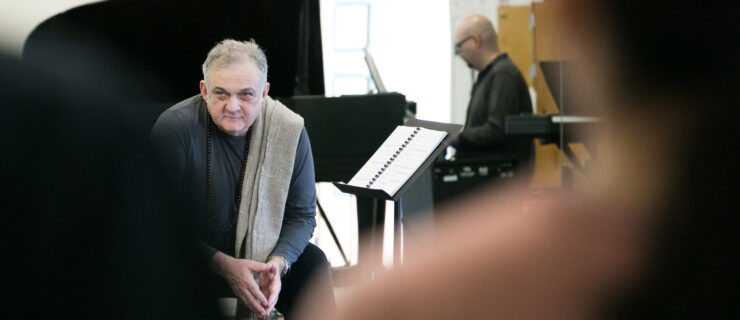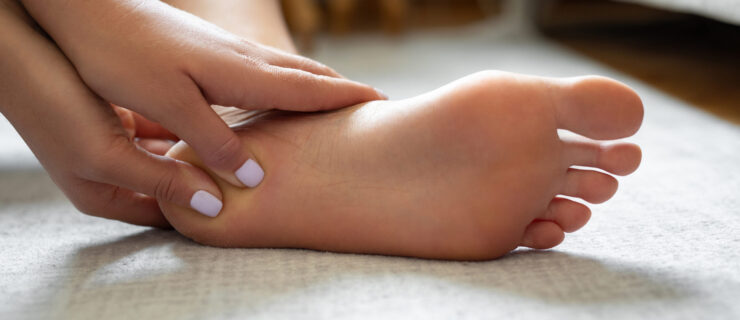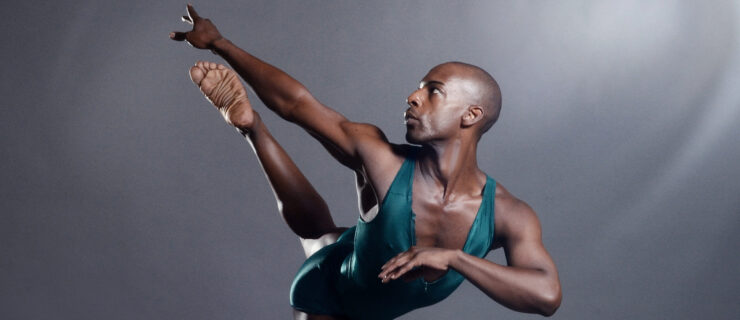Already Feeling the Winter Blues? These Movement Therapy Tools Can Help
Shorter days. Cooler temps. More time indoors.
As winter approaches and the pandemic continues to leave many dancers isolated, the symptoms of seasonal affective disorder may also be starting to creep in. Many fear it could be worse this year, given how COVID-19 has turned artists’ regular routines upside down. “I think we’re going to see it exacerbated in people who already have a propensity for seasonal affective disorder, and I think we will also see individuals who have never experienced it—or never paid attention to it—having symptoms,” says Erica Hornthal, a board-certified dance/movement therapist and licensed clinical professional counselor.
Seasonal affective disorder, sometimes referred to as SAD, the winter blues or seasonal depression, refers to symptoms experienced due to the change of seasons. During late fall or the start of winter, you might feel down, lethargic, less connected to yourself or have a loss of interest in what you usually enjoy. When spring arrives and the days get longer, bringing more sunlight, the depression tends to lift.
Everyone doesn’t experience SAD or its symptoms to the same degree, says Hornthal, founder and CEO of Chicago Dance Therapy and creator of the Dance Therapy Advocates Summit. Whether you’re feeling moments of sadness or have a fuller expression of the disorder, both need to be addressed. “Sometimes we can say, ‘I don’t have a disorder, so it’s not that bad.’ Disorder or not, it’s a set of symptoms, and it’s always important to look at what we’re experiencing and what we can do to make it better,” she says.
Paying attention to your body—something dancers are very familiar with—and giving it some extra TLC may help you cope.
If You’re Prone to SAD
Rather than waiting for the symptoms to roll in, there are a few things you can do to be proactive. “As dancers, do we just wait for the audition, or do we prepare for it?” Hornthal asks. “We can look at it in the same way: How can I condition my mind and my body to best get through a difficult time?”
Create a loose schedule without pressuring yourself to stick to it minute by minute. “Maybe it’s finding 5 to 10 minutes to reconnect with a friend,” she says.
Also important: Plan to stay mobile. If you’re feeling sluggish, that doesn’t mean adding more dance classes to your plate, which could lead to burnout. Instead, dial back your definition of movement to a more human level. Go for a walk, or dedicate a few minutes to deep breathing.
If you need some inspiration for starting a personal movement practice, try one of Hornthal’s 30 prompts, like “Give yourself a hug,” “Take up as much space with your body as possible,” or “Slow down your thoughts by slowing down your movement.” Each activity is meant to help get you out of your head and reconnect with your body.
Get Outside
“We’re already anticipating this dark, dreary, cold, fill-in-the-blank winter,” says Hornthal. But just because you can’t go to a tropical locale to soak up the sun doesn’t mean you can’t safely go outside for fresh air and vitamin D.
Just make sure you have your hat, coat and gloves at the ready. “When the motivation to get outside is there, you have the tools to make it happen,” says Hornthal.
Write It Down
Hornthal encourages her clients to make a daily connection between their body and their mental health with a journal prompt. When you wake up or after you’ve taken class, spend at least five minutes exploring these statements: “Something I notice about my body is: _____. This impacts my mental health because: _____. Actions I will take to address this are: _____.”
For instance, if you notice that your legs are sore, and it’s making you feel fatigued, you could do some gentle stretches or take an Epsom salt bath.
Shake Up Your Movement Routine
Whatever your class and conditioning schedule looks like, find ways to switch it up so it doesn’t become monotonous. “Challenge yourself to find other ways of moving,” says Hornthal. If you do the same yoga video daily, try a different sequence, or hop into a virtual dance class in a different style.
On a more basic level, you could use your non-dominant hand to brush your hair or teeth. “It doesn’t seem like much, but it does wonders for connecting the hemispheres of the brain and waking up those neural connections.”
Find Moments of Lightness and Uplift
With SAD being a type of depression, it’s associated with weight and heaviness. Hornthal encourages dancers to find ways to incorporate uplift or lightness in the body. You could improvise around those ideas, or focus on your posture and gestures throughout the day. “That could just be gently lifting the sternum, raising your chin, making eye contact, opening the shoulders. That’s not easy for everyone,” she says. If you’re spending a lot of time on your phone (who isn’t?), hold it in front of your face or prop it up so your body isn’t slumping downwards.
Change Your Environment
Although you’re likely spending the majority of your time at home, remember that your personal movement practice can happen anywhere. “Find the most comfortable place with the least distractions,” says Hornthal. Try another room in your home, or even your building’s rooftop or an alley around the corner. “Change of scenery and paying attention to your environment before you even engage in movement is really important.” Being intentional about your surroundings can help you connect to the present moment.
A Silver Lining
“There is a stigma where we’re afraid to say what we can’t do or what we might not have the capacity to do because it may impact our job,” says Hornthal. But without the pressure of an intense performance season, many feel empowered to be open up about their struggles. “When you take care of yourself, you can show up for more. You can have a longer career. It’s not always seen that way, but we’re getting the opportunity to be transparent about what we’re experiencing because we’re all experiencing it on some level.”
If SAD is impacting your quality of life, Hornthal encourages dancers to seek out a professional, whether it be a counselor, social worker, psychiatrist or psychologist. “Find somebody that can help support you through these changes.”




